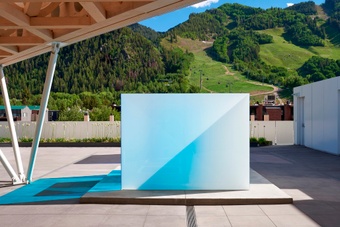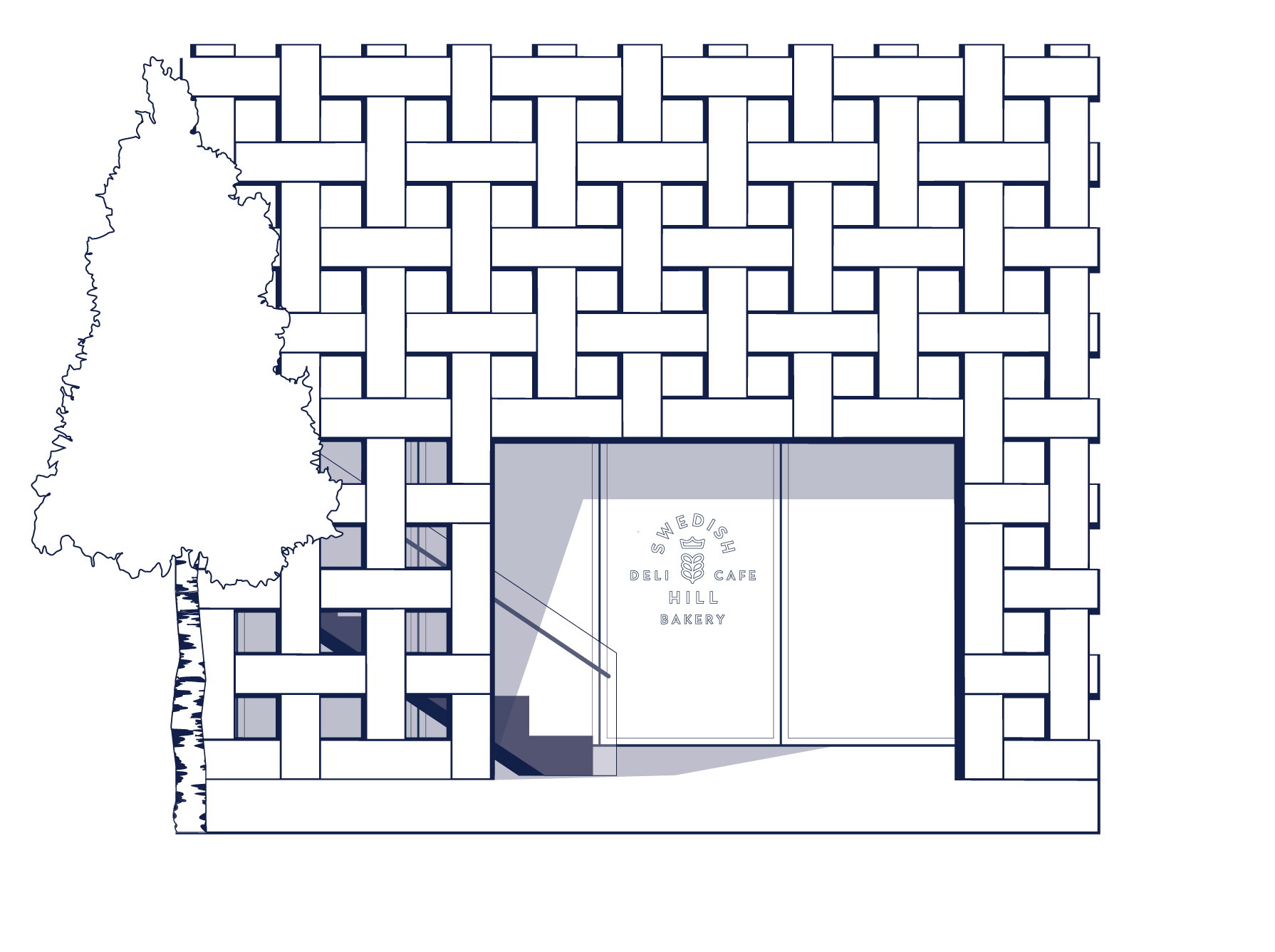Aspen Art Museum
- Categories
- All events
- Talks and Lectures
- Member Events

- For more information on how you can join the AAM, please visit the Street Level Visitor Information Desk, inquire in the Shop, or call 970.925.8050.

- Swedish Hill Aspen is open on our Rooftop from 8AM–3PM

- Aspen Art Museum is an artist-founded institution dedicated to supporting artists in the development of bold ideas to shape our museum and the field of art today.
ArtCrush
2024
SOLD
Pine Valley Greenway
2024
Acrylic, charcoal, cardboard, and oil pastel on newspaper mounted on canvas
Framed: 22.5 × 80 in | 57 × 203 cm
Kindly donated by the artist
Derek Fordjour is channeling 10% of the value of his donated work towards the Contemporary Arts Memphis (CAM) sustainability fund, with the remaining 90% supporting the Aspen Art Museum.
About this Work
The legacy of the Black jockey in the institution of American horse racing is one that informs the politics of race relations even a century later. The attitudes towards the Black jockey at the turn of the 20th century was a direct response to Jim Crow laws and a backlash in public sentiment. After a decade of victories in the late 19th century, they were unceremoniously extricated from the sport, an absence that remains today. I invoke this history in response to the notion of Black moments, in the art world and beyond.
Derek Fordjour, as quoted to Art Asia Pacific in 2021.
The following text appears in the Aspen Art Museum Summer Magazine 2024
Derek Fordjour is best known for his large-scale paintings which combine acrylic with charcoal, pastel, foil and other materials on newspaper—the salmon pink pages of the Financial Times, to be precise—all mounted on canvas. Figures—often engaged in sports or some kind of performance—repeat to create a pulsating rhythm. In Aquatic Composition (2019), held in the collection of the Los Angeles County Museum of Art, swimmers plough up and down the pool, their uniform white swim caps bobbing above the surface, rotat- ing arms throwing up spray. Painted in Fordjour’s signature vibrant tones, the cheerful bunting and lane-dividers here bring the intense details and pat- terning typical of his work. In Chorus of Maternal Grief (2020), held in the Guggenheim Museum, New York, the robes of female singers merge into a sea of sumptuous purple, echoing the harmonies of the music we cannot hear. Full of energy, the paintings are also imbued with a sense of nostalgia, their dapper figures exuding an old- world glamor.
There is a great deal of joy in Fordjour’s work, but also darkness. Pall Bearers (2020), in the collection of the Hammer Museum, Los Angeles, shows six figures in top hats and tails, heads bowed, carrying a gold casket—a work inspired by images of George Floyd’s funeral. In a conversation with Trevor Noah for Interview magazine in 2023, the comedian and presenter shrewdly observed his friend’s work to be “both a celebration of the Black experience and its excellence and power, and at the same time, it’s an examination of everything that Black people have had to experience.”
Fordjour was born in Memphis, TN, and lives and works in New York. He was the Alex Katz Chair at Cooper Union and served as a Core Critic at the Yale School of Art.
About the Artist
Derek Fordjour makes paintings, sculptures, and installations whose exuberant visual materiality gives rise to portraits and other multilayered compositions. Born of both broad sociological vision and a keen awareness of the body’s vulnerability, Fordjour’s tableaux are filled with athletes, performers, and others who play key roles in cultural rituals and communal rites of passage. In his paintings, Fordjour methodically constructs the ground of each composition through a collage-based process involving cardboard, newspaper, and other materials and pigments. The varied and textural surfaces that emerge are as complex—and physically engaging—as the dynamic subjects that Fordjour inscribes on top, within, and through them. His ability to grapple with many strata of artmaking on physical, conceptual, and straightforwardly human terms alike allows his project to communicate the widest possible array of emotions, from celebration and ecstasy to melancholy and lamentation. This, in turn, allows Fordjour to connect to audiences inside and outside of traditional art venues.
Derek Fordjour was born in Memphis, Tennessee to Ghanaian parents. He was awarded 2016 Sugarhill Museum Artist-in-Residence, the 2017 Sharpe Walentas Studio Program in New York City, and named the 2018 Deutsche Bank NYFA Fellowship Award. He was appointed The Alex Katz Chair at Cooper Union and served as a Core Critic at Yale University School of Art. In 2018, he was awarded commissions for the Whitney Museum of American Art Billboard Project and the Metropolitan Transit Authority Arts & Design program. Recently, he was the inaugural artist for the Building Art Series on the façade of MOCA Grand Avenue in Los Angeles. His work has been reviewed in The New York Times, Financial Times, The Los Angeles Times, and Hyperallergic. He has also been featured in several publications such as The Wall Street Journal, Juxtapoz, Vanity Fair and Forbes Magazine. He is a graduate of Morehouse College in Atlanta Georgia, earned a Master’s Degree in Art Education from Harvard University and an MFA in painting from Hunter College. His work is held in the private and public collections of The Studio Museum of Harlem, Guggenheim Museum, Metropolitan Museum of Art, SFMOMA, Brooklyn Museum, Perez Museum, The Whitney Museum and LACMA. Fordjour is the founder of Contemporary Arts Memphis Summer Fellowship program.
ArtCrush
2024
free courtesy
Amy & John Phelan
- Aspen Art Museum
- 637 East Hyman Avenue
- Aspen, Colorado 81611
- t: 970.925.8050
- f: 970.925.8054
- info@aspenartmuseum.org
| Hours |
|
Tuesday–Sunday, 10 AM–6 PM
Closed Mondays
|
© 2024 Aspen Art Museum
General operating support is provided by Colorado Creative Industries. CCI and its activities are made possible through an annual appropriation from the Colorado General Assembly and federal funds from the National Endowment for the Arts.



General operating support is provided by Colorado Creative Industries. CCI and its activities are made possible through an annual appropriation from the Colorado General Assembly and federal funds from the National Endowment for the Arts.



















